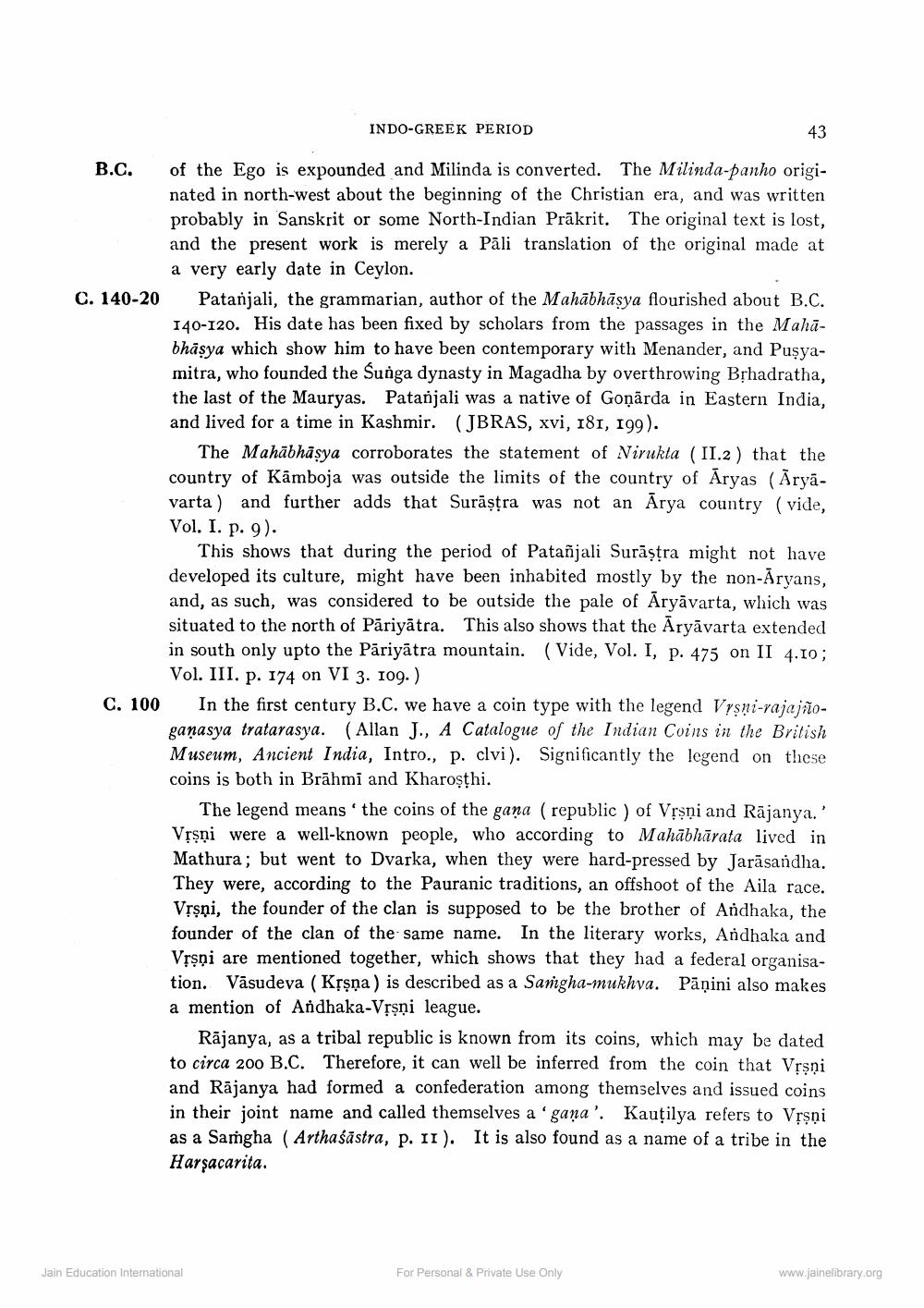________________
INDO-GREEK PERIOD
43
B.C. of the Ego is expounded and Milinda is converted. The Milinda-panho origi
nated in north-west about the beginning of the Christian era, and was written probably in Sanskrit or some North-Indian Prākrit. The original text is lost, and the present work is merely a Pāli translation of the original made at
a very early date in Ceylon. C. 140-20 Patanjali, the grammarian, author of the Mahābhāsya flourished about B.C.
140-120. His date has been fixed by scholars from the passages in the Mahābhasya which show him to have been contemporary with Menander, and Puşyamitra, who founded the Sunga dynasty in Magadha by overthrowing Brhadratha, the last of the Mauryas. Patanjali was a native of Goņārda in Eastern India, and lived for a time in Kashmir. (JBRAS, xvi, 181, 199).
The Mahābhāsya corroborates the statement of Nirukla (II.2) that the country of Kāmboja was outside the limits of the country of Āryas (Aryavarta) and further adds that Surāṣtra was not an Arya country (vide, Vol. I. p. 9).
This shows that during the period of Patañjali Surāstra might not have developed its culture, might have been inhabited mostly by the non-Aryans, and, as such, was considered to be outside the pale of Āryāvarta, which was situated to the north of Pāriyātra. This also shows that the Aryāvarta extended in south only upto the Pāriyātra mountain. (Vide, Vol. I, p. 475 on II 4.10 ;
Vol. III. p. 174 on VI 3. 109.) C. 100 In the first century B.C. we have a coin type with the legend Vysni-rajajko
gaṇasya tratarasya. (Allan J., A Catalogue of the Indian Coins in the British Museum, Ancient India, Intro., P. clvi). Significantly the legend on these coins is both in Brāhmi and Kharoşthi.
The legend means 'the coins of the gana (republic) of Vrsni and Rājanya.' Vrşņi were a well-known people, who according to Mahābhārata lived in Mathura; but went to Dvarka, when they were hard-pressed by Jarāsandha. They were, according to the Pauranic traditions, an offshoot of the Aila race. Vrsņi, the founder of the clan is supposed to be the brother of Andhaka, the founder of the clan of the same name. In the literary works, Andhaka and Vrspi are mentioned together, which shows that they had a federal organisation. Vasudeva (Kțşņa ) is described as a Samgha-mukhya. Pāṇini also makes a mention of Andhaka-Vrşņi league.
Rājanya, as a tribal republic is known from its coins, which may be dated to circa 200 B.C. Therefore, it can well be inferred from the coin that Vrsņi and Rājanya had formed a confederation among themselves and issued coins in their joint name and called themselves a' gana'. Kautilya refers to Vrsņi as a Samgha (Arthaśāstra, P. II). It is also found as a name of a tribe in the Harşacarita.
Jain Education International
For Personal & Private Use Only
www.jainelibrary.org




